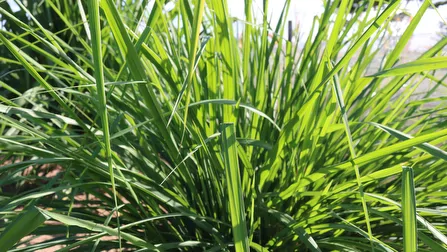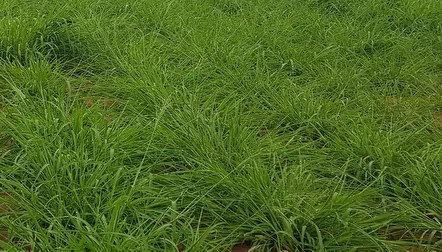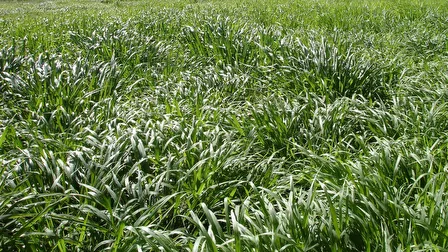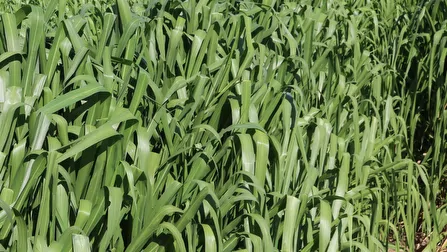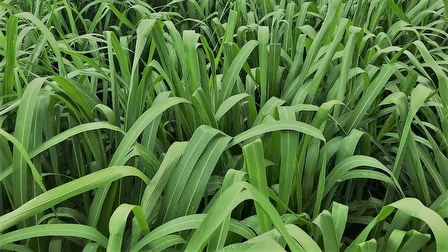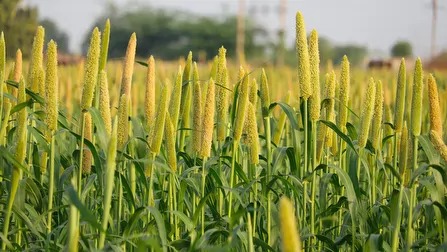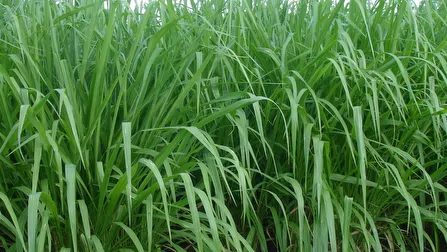
Indicação
Indicada para solos de alta fertilidade e de climas amenos. Recomendado para bovinos em fase de recria e engorda e produção leiteira. Pode ser consumida por equinos e ovinos. Possui sua produção concentrada nas chuvas, podendo ser utilizada em pastejo direto, cortada e fornecida in natura ou silagem, com excelente qualidade nutricional.
Megathyrsus maximus cv. Mombaça
Panicum maximum cv. Mombaça
Solos de alta fertilidade
Pastejo direto e silagem
20 a 28 t/ha/ano de matéria seca (M.S.)
12 a 16%
1,60 a 2,00 m
Excelente
Excelente
Média
Alta
Perene
Origem
Cultivar introduzido no Brasil pela EMBRAPA e pesquisado conjuntamente com o IAPAR. Coletado em 1967 próximo a Korogwe na Tanzânia (África), pelo ORSTOM (Institut Français de Recherche Scientifique pour le Developpement em Coopération), em 1969.
Características Morfológicas
É uma planta cespitosa com altura média de 1,65 a 1,85 m de altura. As folhas são quebradiças, com largura média 3 cm e sem cerosidade. As lâminas apresentam poucos pêlos, duros e curtos, principalmente na face superior. As bainhas são glabras. Os colmos são levemente arroxeados. A inflorescência é uma panícula, com ramificações primárias longas e secundárias longas apenas na base. As espiguetas são glabras e uniformemente distribuídas, de coloração arroxeada em aproximadamente 1/3 da superfície externa. O verticilo normalmente apresenta micropilosidade.
Características Agronômicas
É uma espécie forrageira exigente em fertilidade do solo, mas apresenta maior eficiência na utilização do fósforo do solo. Trata-se de uma cultivar rústica, vigorosa e de alta produção e qualidade de forragem.
Utilização e Manejo
A Mombaça é um Panicum indicado para solos de alta fertilidade, corrigidos e adubados. É indicado para bovinos em fase de recria e engorda, e produção leiteira, podendo também ser consumida por equinos e ovinos. Possui como característica, uma alta produção de forragem de boa qualidade. O Mombaça por apresentar talos mais grossos que a Tanzânia, deve ser pastejado sempre verde. Se os animais forem colocados em pastagens maduras e lignificados de Mombaça, irão refugar estes talos grossos e lignificados, acarretando um “envaretamento” das plantas e como consequência o início do processo de degradação da pastagem. O Mombaça é uma forrageira que deve ser intensamente explorada durante o período chuvoso, época em que o crescimento é mais intenso e a qualidade nutricional também é maior. Apresenta período de florescimento também mais tardio que os demais Panicum maximum. Em áreas de pastejo direto, é recomendado a utilização do manejo rotacionado, com período de descanso de 25 a 30 dias na época das chuvas.
